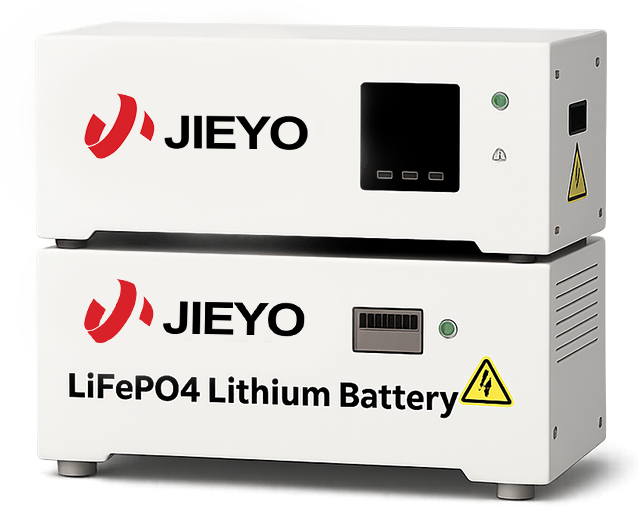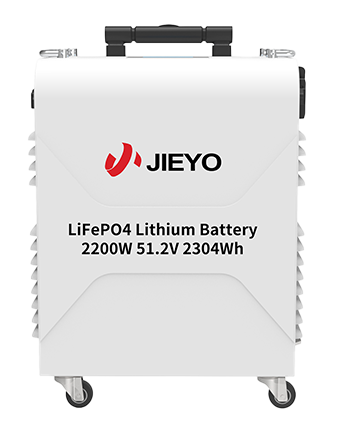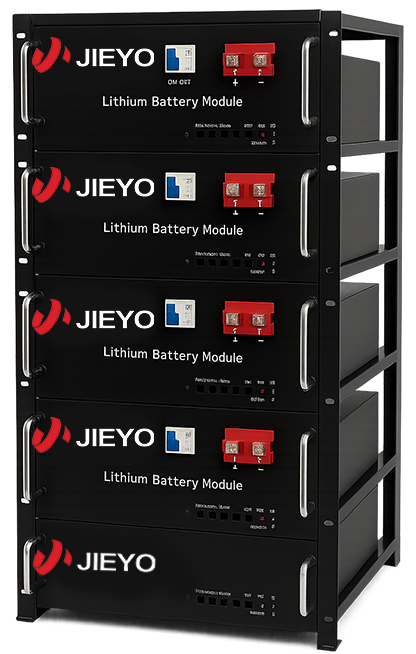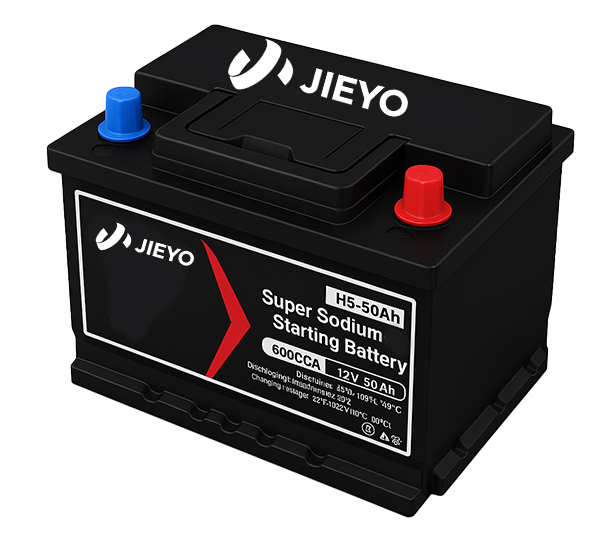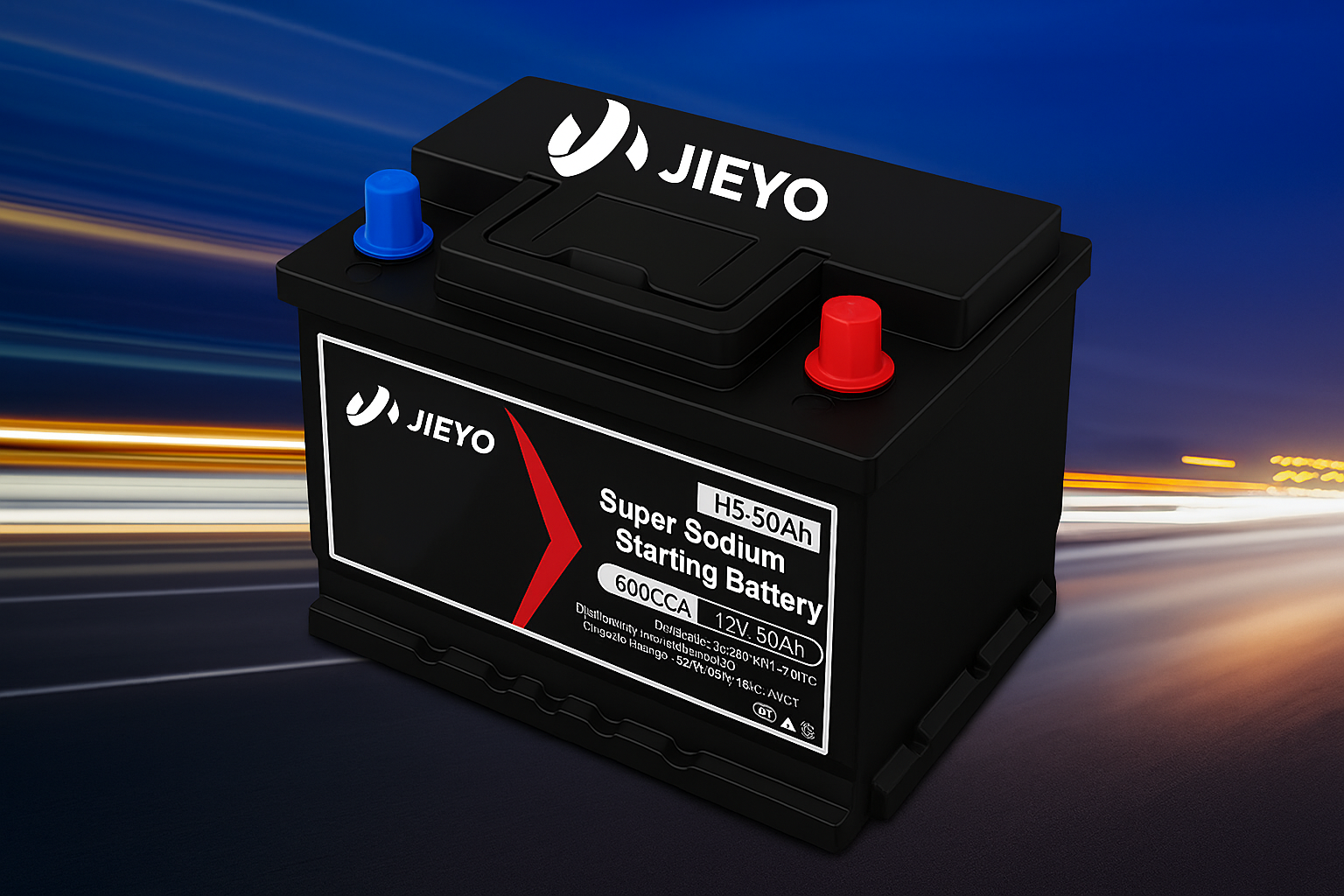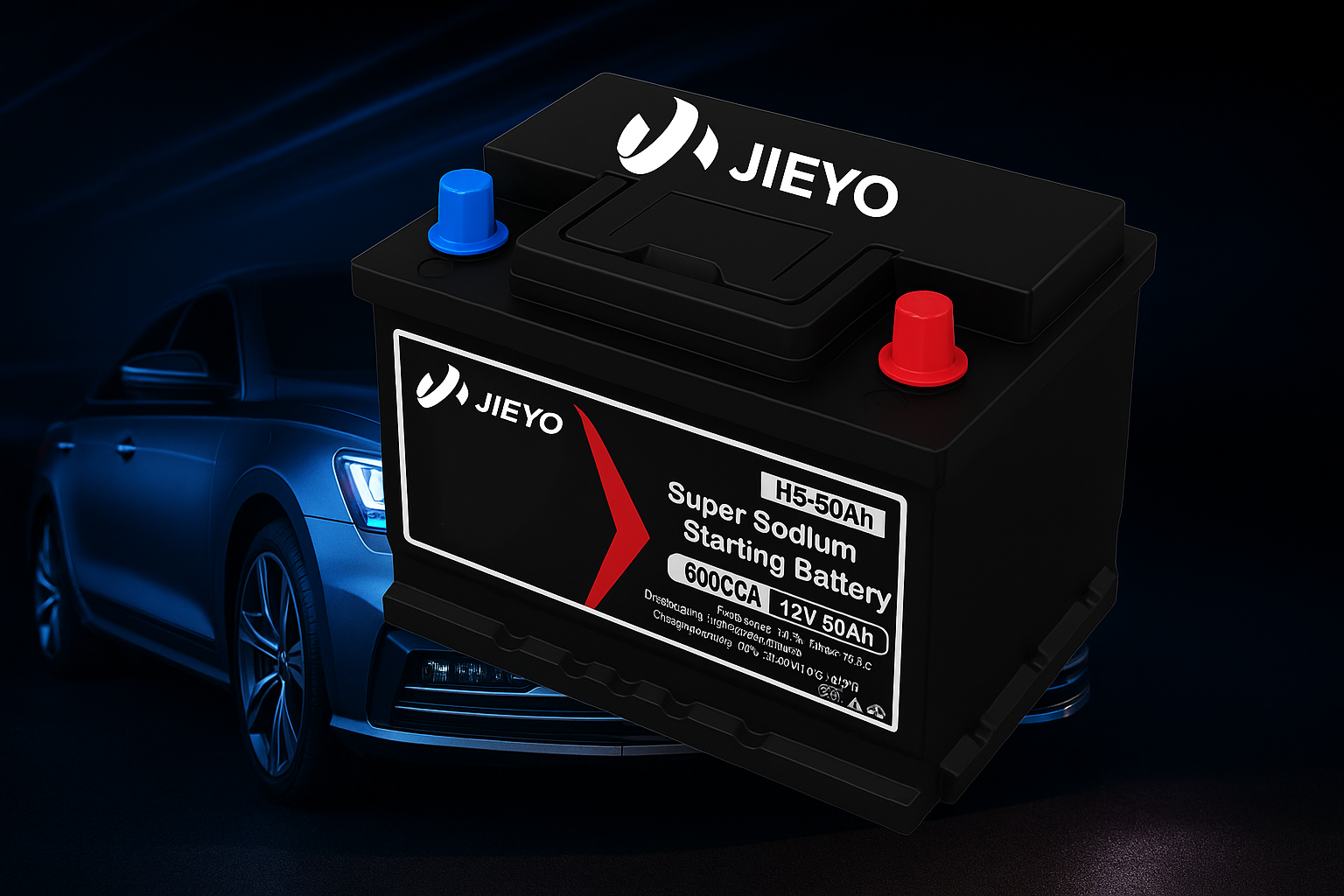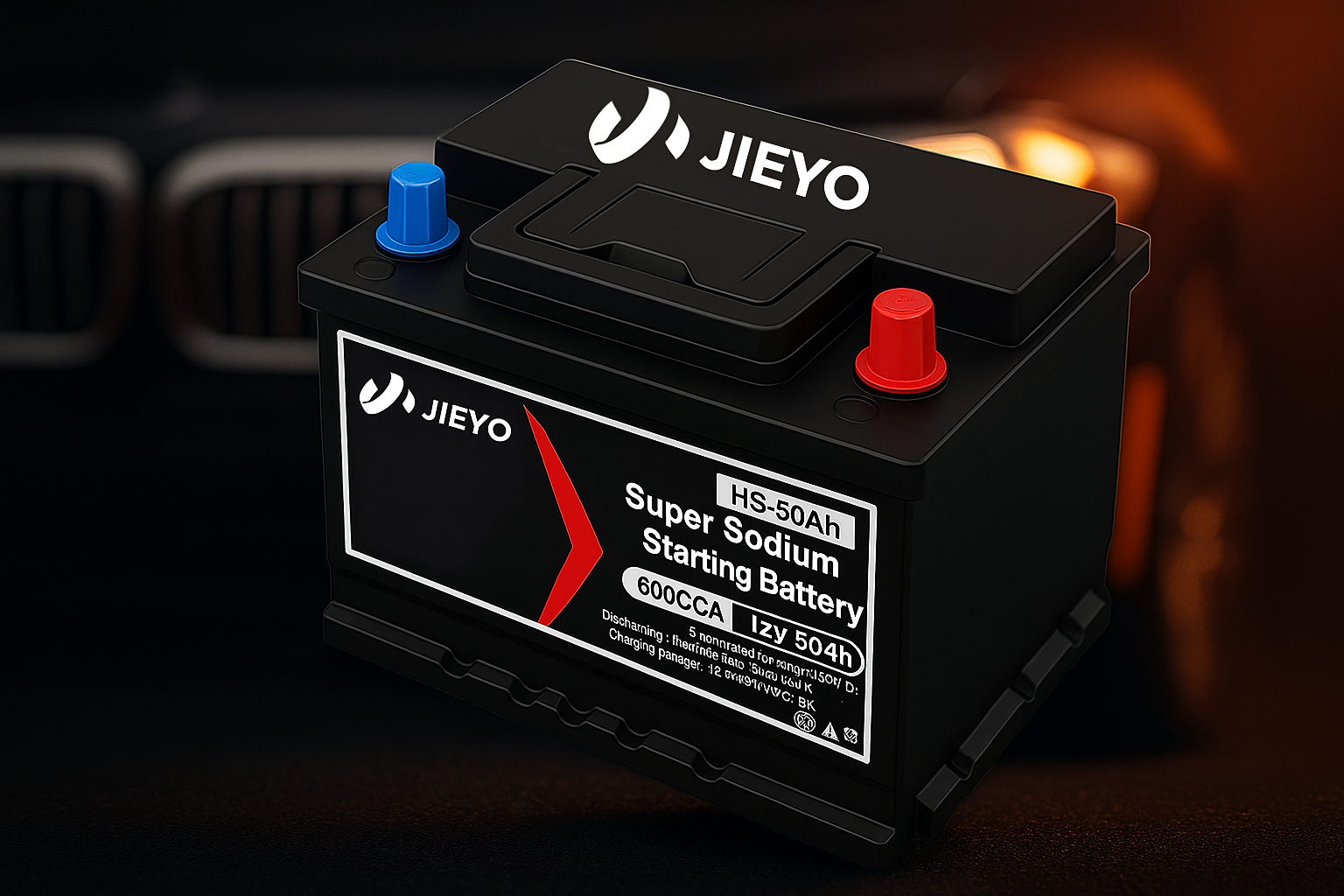Kirjeldus
JIEYO virnastatav energiasalvestusaku - 48 V / 51,2 V LiFePO₄, 5 kWh-25 kWh, CAN/RS485, 6000+ tsüklit
The JIEYO virnastatav energiasalvesti aku on modulaarne, kõrge turvalisusega LiFePO₄-salvestussüsteem, mis on mõeldud elamute ja kergete ärirakenduste jaoks. Iga 51,2 V moodul annab ligikaudu 5,12 kWh kasutatavast energiast ja moodulitest virna vertikaalselt skaala alates 5 kWh kuni 25 kWh (ja veelgi enam mitme virna massiividel). Koos LFP keemia, 6000+ tsükli eluigaja CAN/RS485/RS232 kommunikatsiooniga hübriidinverteritele, on see võrguühenduseta, hübriidse või võrgupõhise varusüsteemi praktiline tuumik.
Suure jõudlusega LFP platvorm (48 V / 51,2 V)
-
Keemia: Liitiumraudfosfaat (LiFePO₄ / LFP), mis tagab stabiilse termilise käitumise ja pika kasutusea.
-
Mooduli nimipinge: 51.2 V (16S LFP).
-
Energia mooduli kohta: ≈ 5,12 kWh; virna 1-5 moodulite jaoks ≈ 5-25 kWh.
-
Tsükliline eluiga: 6000+ tsüklit (tüüpiline elamute tühjendussügavus), mis toetab 10+ aastat igapäevast kasutamist.
-
Edasi-tagasi tõhusus: kõrge (> 95% tüüpiliselt), vähendades süsteemi kadusid ja parandades PV isetarbimist.
-
Madal enesepurunemine: hoiab laadimist hästi hooajalise või erakorralise ooterežiimi ajal.
Miks LFP koduseks ladustamiseks? Võrreldes NMC- ja plii-soolhapetega pakub LFP järgmist parem tsükliline eluiga, parem termiline stabiilsusja lamedamad pingekõverad, mis tähendab prognoositavat jõudlust ja väiksemaid kulusid kWh kohta kogu eluea jooksul.
Tõeline virnastatav, tööriistadeta paigaldus
-
Vertikaalne korstna konstruktsioon: moodulid joonduvad ja lukustuvad mehaaniliselt; ülemine juhtimispakett/BMS juhib kogu virna.
-
Põrandale või kapile/riiulile paigaldatavad valikud: sobib abiruumidesse, garaažidesse, tehnikakappidesse või inverteriseintele.
-
Kiired elektrilised ühendused: lühikesed, märgistatud alalisvooluribad/kaablid vähendavad juhtmestikule kuluvat aega ja vigu.
-
Hiljem laiendatav: alustada 5 kWh-st ja laiendada 10/15/20/25 kWh-ni, kui koormus kasvab - ümberprojekteerimist ei ole vaja.
-
Puhas jalajälg: kitsas sügavus kitsaste ruumide jaoks; hooldustööd lihtsustavad esiosa hooldust.
Nutikas BMS ja süsteemikommunikatsioon
-
Pakkide jälgimine: reaalajas pinge, voolu, temperatuuri ja laetuse seisundi mõõtmine koos rakkude tasakaalustamisega.
-
Kaitsemeetmed: üle-/allpinge, ülevoolu, lühise, üle-/alltemperatuuri ja laengu/puhastuse väljalülitamist.
-
Liidesed: CAN / RS485 / RS232 suletud ahelaga sidepidamiseks hübriidinverterite ja energiaväravatega.
-
Sündmuste logimine: toetab diagnostikat ja müügijärgset hooldust; toetab püsivara uuendusi (vajaduse korral).
-
Ühilduvus: sobivad võrguühenduseta, hübriidvõrguga ja võrguühendusega süsteemid topoloogiad; soovi korral on saadaval inverteri tootemarkide kaardid.
Võrguga ühendamise viisid
-
Off-grid: ühilduv hübriid-/võrguvälise inverteriga autonoomse toitevõrgu saamiseks, kui puudub kommunaalteenus.
-
Hübriidvõrk: isetarbimine, tipptundide säästmine ja kasutusaegne arbitraaž; päevane laadimine PV-st, tühjendamine tipptundidel.
-
Võrgusisene varukoopia: säilitada olulised vooluahelad katkestuste ajal, kasutades ATS/varuväljundit inverterist (vastavalt kohalikele eeskirjadele).
Mehaanika- ja keskkonnatehnika
-
Kaitseklass: valikud kuni IP54-IP65 (mudelist sõltuv), mis on vastupidav tolmule ja juhuslikule niiskusele.
-
Jahutamine: õhkjahutusega vaikseks tööks ja pikaks elueaks kavandatud soojusradu.
-
Lisa: pulbervärvitud terasest või sulamist korpus; logistika ja kohapealse käsitsemise jaoks tugevdatud nurgad.
-
Kasutatavus: modulaarne ülesehitus võimaldab vahetada moodulite tasandil, et vähendada seisakuaega.
Disainitud ohutus
-
Raku tasandil LFP ohutus keraamiliste separaatorite ja prismaatiliste/EV-klassi elementidega.
-
Pakendisulamid ja kontaktorid koos eellaadimisahelatega, et kaitsta vooluahelaid ja inverteri alalisvooluühendust.
-
Isolatsioon ja isolatsioon testitud vastavalt asjakohastele standarditele; kõrgepinge korstnate puhul järgitakse hiilimiskaugusi.
-
Vastavusdokumentatsioon: CE / RoHS / MSDS / UN38.3 logistika ja turule sisenemise jaoks.
Tüüpilised elektrilised omadused*
(*Väärtused varieeruvad vastavalt konfiguratsioonile; küsige oma turu täpset andmelehte.)
-
Nimipinge: 51,2 V mooduli kohta; mitme mooduli korstnad, mida haldab BMS.
-
Kasutatav energia: ≈ 5,12 kWh mooduli kohta; 10-25 kWh 2-5 mooduli korpuses.
-
Soovitatav C-kraad: 0,5 C pidevalt; 1 C tipp võime sõltuvalt inverterist ja keskkonnatingimustest.
-
DoD aken: 90-100% konfigureeritav; standardgarantii on seotud DoD soovitustega.
-
Edasi-tagasi tõhusus: > 95% tüüpiline kaasaegsetele hübriididele.
-
Temperatuur: laadimine 0-45 °C, tühjendamine -10-55 °C (tüüpiline); parima kasutusaja saavutamiseks hoiustada 15-30 °C juures.
-
Kommunikatsioon: CAN / RS485 / RS232 koos DIP- ja püsivara kaudu valitavate tootjapõhiste protokollidega.
Kasutusjuhtumid
-
Elamute PV isetarbimine: salvestada päevane päikeseenergia õhtuste tippude katmiseks; suurendada PV kasutamise määra.
-
Varavõimsus: hoiab ruuterid, valgustuse, arvutid, turvasüsteemid, külmikud ja ringluspumbad töökorras ka katkestuste ajal.
-
Peak-shaving & TOU: laadimine väljaspool tipptaset, tühjendamine tipptasemel, et vähendada arveid.
-
Väikesed C&I mikrovõrgud: stabiliseerida koormusi jaekaubanduses, töökodades, telekommunikatsioonivarjendites ja kaugkabiinides.
-
RV/Mariinikabiinid ja -majad: statsionaarsed korstnad võivad toetada pikemat viibimist vaikse, kütusevaba energiaga.
Näited süsteemi suuruse määramise kohta (illustratiivsed)
-
5 kWh (1× moodul): väikesed korterid, ruuterid/IT + valgustus + aeg-ajalt seadmete varukoopia.
-
10 kWh (2×): tüüpiline 3-5 kW hübriidinverter õhtuseks tarbimiseks ja lühiajalisteks katkestusteks.
-
15 kWh (3×): pikem autonoomia külmikute, kodutööna töötavate seadeldiste ja pumpade puhul.
-
20-25 kWh (4-5×): laiendatud varukoopia suuremate kodude jaoks; sobib hästi 8-12 kW PV-massiivide ja 8-10 kW hübriidseadmetega.
Tööaja planeerimiseks on kiire hinnangu järgi:
Tööaeg (h) ≈ võimsus (Wh) × DoD × süsteemi tõhusus / keskmine koormus (W).
25 kWh puhul on 90% DoD ja 92% süsteemi kasuteguriga ≈ 20,7 kWh kasutatav-piisavalt ~20 tundi keskmiselt 1 kW juures.
Märkused paigaldamise ja kasutuselevõtu kohta
-
Inverteri sidumine: valige inverter, millel on toetatud CAN/RS485 profiil; seadke aku tüübiks LFP ja valige JIEYO (või ühilduv) profiil.
-
Alalisvoolu juhtmestik: järgige polaarsust ja pöördemomendi spetsifikatsioone; kasutage vastavalt koodile sobiva suurusega alalisvoolu isolaatoreid ja kaitsmeid.
-
Maandus: liimida korpus ja riiul vastavalt kohalikele elektriseadustikele.
-
Ventilatsioon: võimaldage õhuvooluks vaba ruumi ees/küljel; vältige suletud kappe suure õhukeskkonnaga ruumides.
-
Firmware ja BMS-i adresseerimine: virnastamisel seadistage DIP-aadressid kasvavas järjekorras; kontrollige seda inverteri ekraanil/rakenduses.
-
Käivitamine: laadige esimesel sõidul 100%-le, et sünkroonida SOC ja teostada BMS tasakaalustamine.
Hooldus ja ladustamine
-
Perioodilised kontrollid: kinnitage rööpmete pöördemoment, kontrollige ventilatsiooniteed ja vaadake läbi BMS-i logid.
-
Pikaajaline ladustamine: hoidke 40-60% SOC; täiendage iga 2-3 kuu tagant.
-
Firmware: rakendab uuendusi heakskiidetud kanalite kaudu, kui ilmuvad uued inverteriprofiilid või optimeerimised.
-
Omaniku praktika: vältige ekstreemset kuumust või püsivaid kõrge C-heitega laenguid, et maksimeerida kasutusiga.
Mis on virnas (tüüpiline)
-
51.2 V LFP akumoodulid (kogus tellimuse kohta)
-
Ülemine BMS/juhtimine moodul koos näidiku/näidikutega
-
Alusplaat / virnastamisraam, moodulitevahelised rööpmelkandurid ja kinnitusvahendid
-
CAN/RS485 sidekaabel inverterile, alalisvoolu toitekaablid (mudelist sõltuvalt)
-
Kasutusjuhend ja kiirjuhend; paigalduskomplekt
(Sisu sõltub piirkonnast ja valitud tarvikutest.)
Sertifikaadid ja kvaliteet
-
Ohutus ja transport: MSDS & UN38.3
-
Turu nõuetele vastavus: CE / RoHS (teised on saadaval soovi korral)
-
Tehase kvaliteedikontroll: sissetulevate rakkude sõelumine, rakkude sobitamine, moodulite vananemise testid ja täielikud funktsionaalsed testid koos BMS logimisega.
OEM / ODM teenused
-
Brändimine ja märgistamine: logo, värvilised aktsendid, nimesildid, pakendid
-
Elektrilised valikud: kaablite pikkused, PV/kommunikatsiooniliitmikud, kaitsmete nimiväärtused, väljalülitusliidesed
-
Mehaanilised variandid: rack-komplektid, seinakinnitused, tolmufiltrid karmimateks kohtadeks
-
Protokolli kaardistamine: CAN/RS485 profiilid konkreetsete inverterimarkide jaoks; integratsioonijuhendid paigaldajatele
Peamised atribuudid (hetkeseis)
-
Aku tüüp: LiFePO₄ (LFP)
-
Mudeliperekond: JY-S5000 / HV korstnat (piirkondlik nimetus võib erineda)
-
Päritolukoht: Guangdong, Hiina
-
Võrguühendus: Võrguväline, hübriidvõrk, võrku ühendatud (ühilduva inverteri kaudu)
-
Kaitseklass: kuni IP54-IP65 (vastavalt konfiguratsioonile)
-
Jahutamine: Õhujahutus
-
Tsükliline eluiga: 6000 tsüklit (tüüp.)
-
Kommunikatsioonipordid: RS485 / CAN / RS232
-
OEM/ODM: Aktsepteeritav
-
Kasutamine: Tööstuslik / äriline / elamute energiasalvestus
Kaalud ja mõõtmed sõltuvad moodulite arvust; ühe mooduli näidise kaalud on tavaliselt vahemikus 40-50 kg vahemikus, kusjuures korstna kogumass kasvab lineaarselt.
Kellele see on mõeldud
-
Koduomanikud, kes soovivad vaikne, turvaline päikeseenergia ladustamine koos kasvuruumiga
-
Paigaldajad, kes standardiseerivad 51,2 V virna platvorm mis ulatub üksikutest kodudest kuni väikeettevõteteni
-
Projekti ostjad vajavad dokumenteeritud, tõendatavad LFP ladustamine koos CAN/RS485 integratsioon
-
Energiakindluse kasutajad, kes otsivad tipptundide säästmine, varundamine ja isetarbimine ühes süsteemis

